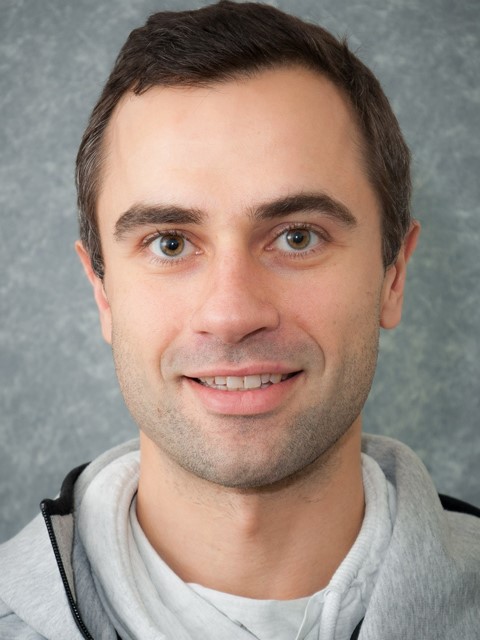Guidelines for Concept Proposals
Purpose
The UCSF-Gladstone Center for AIDS Research (CFAR) announces the availability of administrative supplement funding from the NIH CFAR Program for projects related to the following areas of scientific interest:
-
Promoting Viral Suppression in Health Disparity Populations Engaged in HIV Care in Rural Communities
-
HIV Healthcare Systems and Differentiated Care Approaches to Improve Viral Suppression
-
Innovative Technologies for Basic Research on HIV and Comorbidities
-
Tuberculosis Research (supported by Division of Microbiology and Infectious Diseases (DMID), NIAID –TB mono-infection studies allowed)
Eligibility
Project leaders for all scientific areas of interest are restricted to:
- Early career investigators who have never received an R-series, R01-equivalent or U-series research grants
- Established investigators in non-HIV fields who have never received an NIH research award for HIV/AIDS studies
- Post-doctoral fellows are eligible to apply if they will assume a faculty position by the time the supplement project and funding begins
Mentorship and collaboration with established AIDS investigators is required. CFAR Core and Scientific Working Group leaders are encouraged to collaborate on their applications, and to collaborate with appropriate individuals not currently involved in AIDS research.
Studies that are a continuation of previously funded CFAR supplements or funded NIH applications that do not address new specific aims are not eligible for funding under this announcement. Additionally, a proposed supplement application that is linked to a proposed application not yet funded is not eligible for funding under this announcement.
Studies involving clinical trials are not allowed (see definition). Contact to check allowability.
Funding
Supplement awards are for up to one year with maximum funding per application of up to $100,000-$200,000 Direct Costs (depending on category – see full announcement). Awards will be made as supplements to the CFAR grant.
Each CFAR is limited to submitting a maximum of four applications for categories 1-4 and one application for category 5; therefore we are conducting an internal competition to determine which applications will go forward for submission to the NIH.
Concept Proposal Application Process
CFARs are strongly encouraged to submit projects in collaboration with investigators and disciplines not usually involved in HIV research. Involvement and mentoring of early stage investigators is also strongly encouraged. This opportunity should build research capacity at the CFAR institution or at partnering foreign institutions in the scientific areas specified and is intended to complement ongoing domestic and international HIV/AIDS research efforts funded or sponsored by the NIH.
To apply for this opportunity, please do the following:
- PLEASE SUBMIT CONCEPT PROPOSALS ELECTRONICALLY IN ONE FILE (MS Word or Adobe PDF) TO Lauren Sterling by 11:59pm PDT, Thursday, April 11, including:
- Cover letter with title of proposed project (maximum of 81 characters), name and contact information of Project Director, and name(s) and contact information of Mentor(s), if applicable. Please also address the following:
- Identify your selected Scientific Area of Interest from the five areas listed above.
- Please note whether you will be proposing an international component and specify the location.
- Include a table listing the key personnel to participate in the proposed project, including the following information: Names, degrees, institutional affiliations, and roles in project.
- Include a brief description of how you have addressed the purpose of this opportunity and the eligibility requirements described in the announcement.
- Description of proposal (limit one page, Arial 11 font or equivalent) briefly addressing the following:
- Background and rationale for the proposal
- Activities to be undertaken
- Expected outcome of these activities (value-added)
- Expected follow-up plan upon completion of the project
- A description of how the supplement and follow-up plan are expected to achieve this outcome.
- Most importantly, clearly indicate how the proposed research activities are expected to lead to the development of stated goals.
- References cited do not count towards the one page limit.
- Applicants are strongly encouraged to review the review criteria listed in the full announcement.
- NIH-formatted Biosketch of Project Director. Please make sure to include past and current Research Support so that we can confirm Project Director eligibility.
- Brief description of budget by cost category (salaries, benefits, supplies, equipment, travel, other services, subcontracts). Be sure that the aims of the proposal can be achieved with the given budget. Refer to the NIH Grants Policy Statement regarding allowable and unallowable costs. Please note that subcontract indirect costs are allowable and do not count towards the direct cost limit. Contact Lauren Sterling (cc: Frank Fernandez) if you have any budgetary questions.
- Cover letter with title of proposed project (maximum of 81 characters), name and contact information of Project Director, and name(s) and contact information of Mentor(s), if applicable. Please also address the following:
4 Awards
-
2019 CFAR Women and HIV Symposium
2019 CFAR Women and HIV Symposium

Abstract
The goal of the 2019 Inter-CFAR Women and HIV Symposium is to share cutting edge research, extend knowledge, and foster action to address gaps toward understanding the complex clinical, biological and social aspects of HIV in women. Organized for the sixth time by the Inter-CFAR Collaboration on HIV Research in Women working group, this symposium will focus on all aspects of HIV in the context of women and will guide new strategies for future research on HIV-related issues unique to women.
-
2019 CFAR Women and HIV Symposium
2019 CFAR Women and HIV Symposium

Abstract
The goal of the 2019 Inter-CFAR Women and HIV Symposium is to share cutting edge research, extend knowledge, and foster action to address gaps toward understanding the complex clinical, biological and social aspects of HIV in women. Organized for the sixth time by the Inter-CFAR Collaboration on HIV Research in Women working group, this symposium will focus on all aspects of HIV in the context of women and will guide new strategies for future research on HIV-related issues unique to women.
-
Functional heterogeneity of human lung myeloid cells in TB
Functional heterogeneity of human lung myeloid cells in TB

Abstract
Lung myeloid cells are widely accepted as major contributors to the pulmonary immune response to Mycobacterium tuberculosis (Mtb). These cells are comprised of multiple diverse subsets with highly specialized functions. Recent observations in mice, by Dr. Ernst and others, highlight the importance of myeloid cell diversity on the course of Mtb infection. These studies describe phenotypically distinct subsets of pulmonary myeloid cells with a differential capacity to kill, restrict, or permit growth of Mtb. Few studies have addressed the impact of lung myeloid cell diversity in humans.
-
Functional heterogeneity of human lung myeloid cells in TB
Functional heterogeneity of human lung myeloid cells in TB

Abstract
Lung myeloid cells are widely accepted as major contributors to the pulmonary immune response to Mycobacterium tuberculosis (Mtb). These cells are comprised of multiple diverse subsets with highly specialized functions. Recent observations in mice, by Dr. Ernst and others, highlight the importance of myeloid cell diversity on the course of Mtb infection. These studies describe phenotypically distinct subsets of pulmonary myeloid cells with a differential capacity to kill, restrict, or permit growth of Mtb. Few studies have addressed the impact of lung myeloid cell diversity in humans.
-
Permanent silencing of latent HIV using CRISPRi with engineered transcriptional repressors
Permanent silencing of latent HIV using CRISPRi with engineered transcriptional repressors

Abstract
The presence of functional latent HIV proviruses integrated within a small, but diverse, fraction of resting memory CD4+ T cells is currently thwarting a cure for HIV-infected individuals. The toxicity of antiretroviral therapy (ART), the increasing economic burden of supporting lifelong ART to a growing number of infected individuals in resource-limited countries, and the steady emergence of drug resistance all underscore the need for a safe and scalable strategy to achieve sustained HIV remissions in the absence of ART. How best to achieve this goal?
-
Permanent silencing of latent HIV using CRISPRi with engineered transcriptional repressors
Permanent silencing of latent HIV using CRISPRi with engineered transcriptional repressors

Abstract
The presence of functional latent HIV proviruses integrated within a small, but diverse, fraction of resting memory CD4+ T cells is currently thwarting a cure for HIV-infected individuals. The toxicity of antiretroviral therapy (ART), the increasing economic burden of supporting lifelong ART to a growing number of infected individuals in resource-limited countries, and the steady emergence of drug resistance all underscore the need for a safe and scalable strategy to achieve sustained HIV remissions in the absence of ART. How best to achieve this goal?
-
An automated liquid handling platform and an ultra performance liquid chromatography
An automated liquid handling platform and an ultra performance liquid chromatography

Abstract
The UCSF-Gladstone CFAR Pharmacology Core must maintain state-of-the-art analytical equipment to expand its analytical armamentarium and remain at the forefront of pharmacology research of HIV and related diseases. The Core has provided services to the UCSF scientific community and to scientists nationally and internationally for >30 years and has longstanding pre-clinical and clinical expertise in HIV, malaria and tuberculosis research.
-
An automated liquid handling platform and an ultra performance liquid chromatography
An automated liquid handling platform and an ultra performance liquid chromatography

Abstract
The UCSF-Gladstone CFAR Pharmacology Core must maintain state-of-the-art analytical equipment to expand its analytical armamentarium and remain at the forefront of pharmacology research of HIV and related diseases. The Core has provided services to the UCSF scientific community and to scientists nationally and internationally for >30 years and has longstanding pre-clinical and clinical expertise in HIV, malaria and tuberculosis research.
